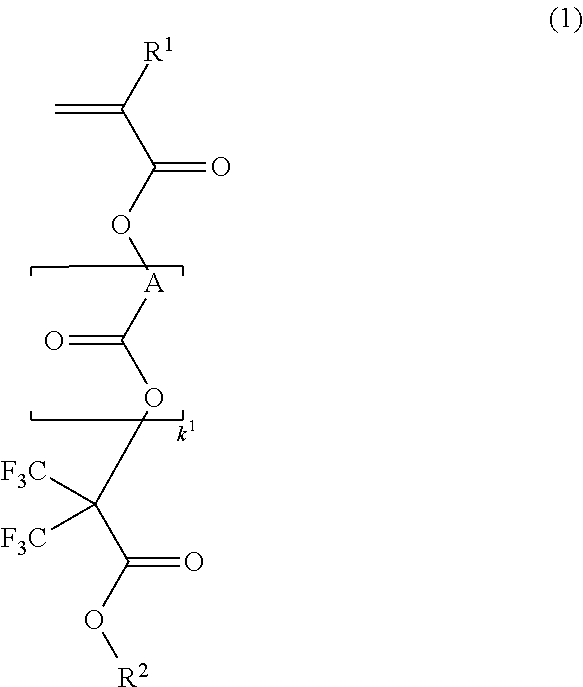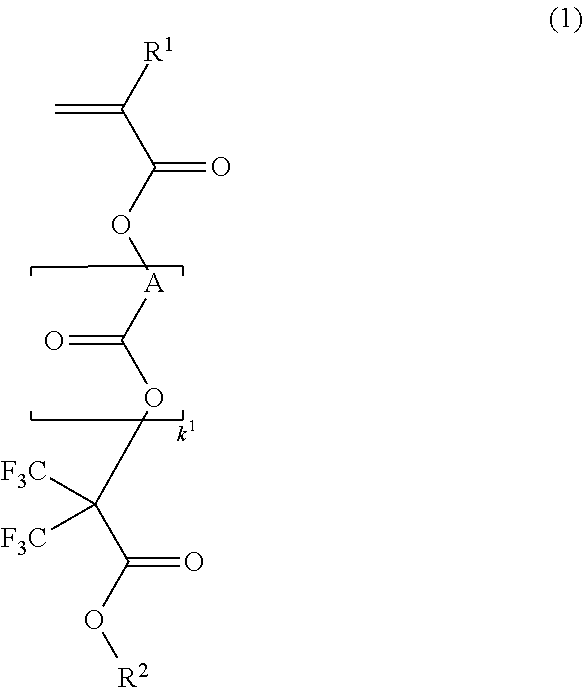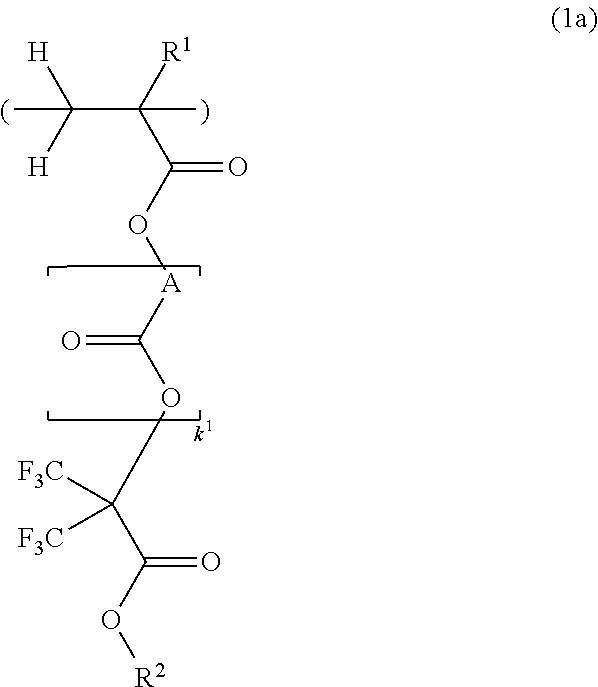Fluorinated monomer, fluorinated polymer, resist composition, and patterning process
a technology of fluorinated monomers and polymers, applied in the direction of optics, basic electric elements, electric devices, etc., can solve the problems of resist performance, pattern profile change, postponement of fsub>2 /sub>lithography, etc., and achieves high transparency, easy handling, and convenient availability
- Summary
- Abstract
- Description
- Claims
- Application Information
AI Technical Summary
Benefits of technology
Problems solved by technology
Method used
Image
Examples
synthesis example 1-1
Synthesis of Monomer 1
[0197]
[0198]A mixture of 67.9 g of methacrylic acid chloride and 3.3 g of acetonitrile was added dropwise to a solution of 113 g of methyl 2-hydroxy-3,3,3-trifluoro-2-trifluoromethylpropionate and 75.9 g of triethylamine in 250 ml of acetonitrile below 20° C. Stirring was continued at room temperature for 5 hours, after which 20 g of water was added dropwise to the reaction solution under ice cooling to quench the reaction. This was followed by ordinary aqueous work-up and vacuum distillation, obtaining 125 g of the target compound (yield 85%).
[0199]Boiling point: 63° C. / 1.6 kPa
[0200]IR (D-ATR): ν=1778, 1759, 1638, 1458, 1440, 1261, 1237, 1123, 1047, 1002, 953 cm−1
[0201]1H-NMR (600 MHz in DMSO-d6):
[0202]δ=1.94 (3H, s), 3.93 (3H, s), 6.06 (1H, s), 6.26 (1H, s) ppm
[0203]19F-NMR (565 MHz in DMSO-d6, trifluoroacetic acid standard):
[0204]δ=−71.28 (6F, s) ppm
synthesis example 1-2
Synthesis of Monomer 2
[0205]Monomer 2 was synthesized by the same procedure as in Synthesis Example 1-1 aside from using acrylic acid chloride instead of methacrylic acid chloride. Yield 87%.
synthesis example 1-3
Synthesis of Monomer 3
[0206]Monomer 3 was synthesized by the same procedure as in Synthesis Example 1-1 aside from using α-trifluoromethyl-acrylic acid chloride instead of methacrylic acid chloride.
[0207]Yield 73%.
PUM
| Property | Measurement | Unit |
|---|---|---|
| wavelength | aaaaa | aaaaa |
| wavelength | aaaaa | aaaaa |
| refractive index | aaaaa | aaaaa |
Abstract
Description
Claims
Application Information
 Login to View More
Login to View More - R&D
- Intellectual Property
- Life Sciences
- Materials
- Tech Scout
- Unparalleled Data Quality
- Higher Quality Content
- 60% Fewer Hallucinations
Browse by: Latest US Patents, China's latest patents, Technical Efficacy Thesaurus, Application Domain, Technology Topic, Popular Technical Reports.
© 2025 PatSnap. All rights reserved.Legal|Privacy policy|Modern Slavery Act Transparency Statement|Sitemap|About US| Contact US: help@patsnap.com



